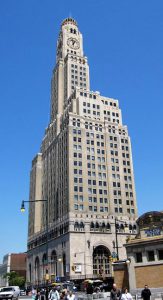
Exhibition highlights 50-year-old NYC Landmarks Law

To mark the 50th anniversary of New York City’s Landmarks Law, a new exhibition looks at the architectural losses that led up to the law and how it has helped shape neighborhoods today that blend both the old and new.
“Saving Place,” which opens Tuesday at the Museum of the City of New York, highlights what is widely seen as a watershed moment in the city’s preservation movement, the 1963 demolition of the old Beaux Arts-style Pennsylvania Station to make way for Madison Square Garden.
“Nobody really believed that a building of such civic importance would be demolished,” said Meenakshi Srinivasan, an architect and chairman of the Landmarks Preservation Commission. “It really created the coalescing of all factors to come together to save buildings important to New York City’s identity.”
Leave a Comment
Leave a Comment

Brooklyn Boro
View MoreNew York City’s most populous borough, Brooklyn, is home to nearly 2.6 million residents. If Brooklyn were an independent city it would be the fourth largest city in the United States. While Brooklyn has become the epitome of ‘cool and hip’ in recent years, for those that were born here, raised families here and improved communities over the years, Brooklyn has never been ‘uncool’.